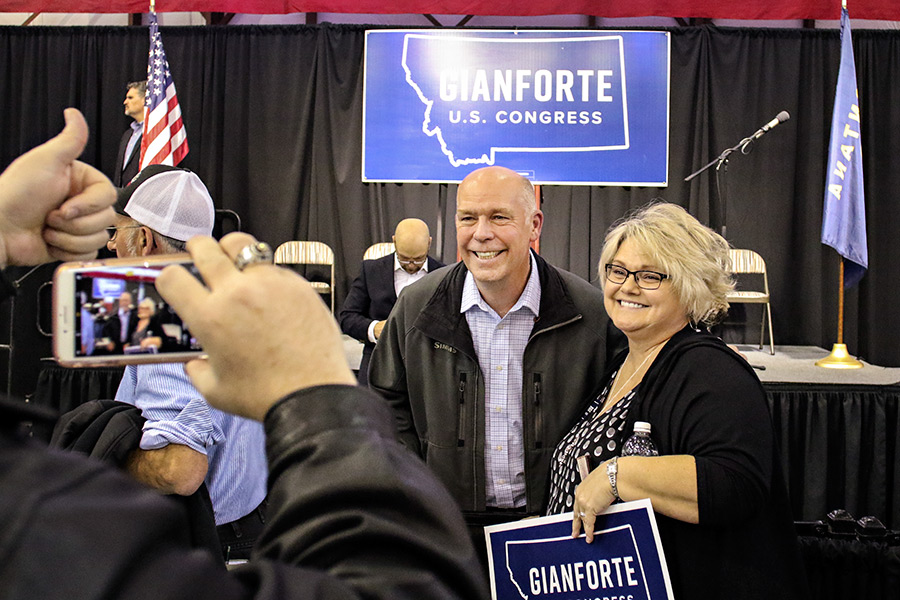HELENA — Campaign spending ahead of Thursday’s special election to fill Montana’s only U.S. House seat continued to surge deep into record territory, with at least $17 million flowing into the race from the campaigns and outside groups hoping to influence the nationally watched contest.
The sum is especially remarkable — or alarming — because of the 85-day campaign period for a special election to replace Ryan Zinke, who resigned his congressional post to become President Donald Trump’s Interior secretary.
The congressional race two years ago, which until now was the state’s most expensive congressional race, generated about $9 million in spending for a campaign that spanned primary and general elections.
The campaign committees for Democrat Rob Quist and Republican Greg Gianforte have raised at least $10 million combined, while outside groups have spent more than $7.1 million thus far.
The Quist campaign announced Tuesday that it had topped $6 million in contributions, noting that it had generated about $1 million in small donations over the past five days — a period that overlapped the visit of Vermont Sen. Bernie Sanders over the weekend.
That amount could not be immediately verified because it had not yet been reported to the Federal Elections Commission.
Gianforte’s campaign said it has raised about $4.6 million, including a last-minute loan of $500,000 from Gianforte. He had previously lent his campaign $1 million.
The combined total in direct contributions is a record haul for a Montana congressional race.
“There isn’t much competition for dollars right now,” said Denise Roth Barber, the managing director of the Helena-based National Institute on Money in State Politics. “With the exception of the race in Georgia, these candidates are not competing for money with other competitive races in other parts of the country. So there’s a lot of money to be given.”
The Montana race is also being closely watched by national groups, she said, as a possible harbinger of things to come — not only in the Georgia special election in June, but also in next year’s wider battle over Congress during the Trump era.
Most of that money coming into the race has been used to finance a barrage of advertising on radio and television, much of it negative.
Libertarian Mark Wicks has yet to file a fundraising report with the FEC.
The money flowing into the campaign from independent outside groups, which can spend unlimited amounts of money, has mostly benefited Gianforte. Groups supporting the Bozeman entrepreneur have spent more than $6.3 million, according to FEC records, including $2.4 million from the Congressional Leadership Fund.
The fund has also spent heavily to influence another special congressional election in Georgia, as have the Republican Party committees.
The Republican National Committee and the National Republican Congressional Committee have combined for more than $3.1 million.
While Quist has gotten most of his money from individual donors, he has also benefited from independent campaign committees, such as Planned Parenthood and the Democratic Congressional Campaign Committee which was responsible for about half of the roughly $800,000 in spending on Quist’s behalf.
